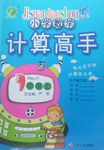题目内容
---Shall we go fishing on Saturday or Sunday?
--- Up to you. _______.
A. That’s all right. B. Never mind
C. That’s not the point. D. It makes no difference to me.
练习册系列答案
 计算高手系列答案
计算高手系列答案
相关题目
题目内容
---Shall we go fishing on Saturday or Sunday?
--- Up to you. _______.
A. That’s all right. B. Never mind
C. That’s not the point. D. It makes no difference to me.
 计算高手系列答案
计算高手系列答案